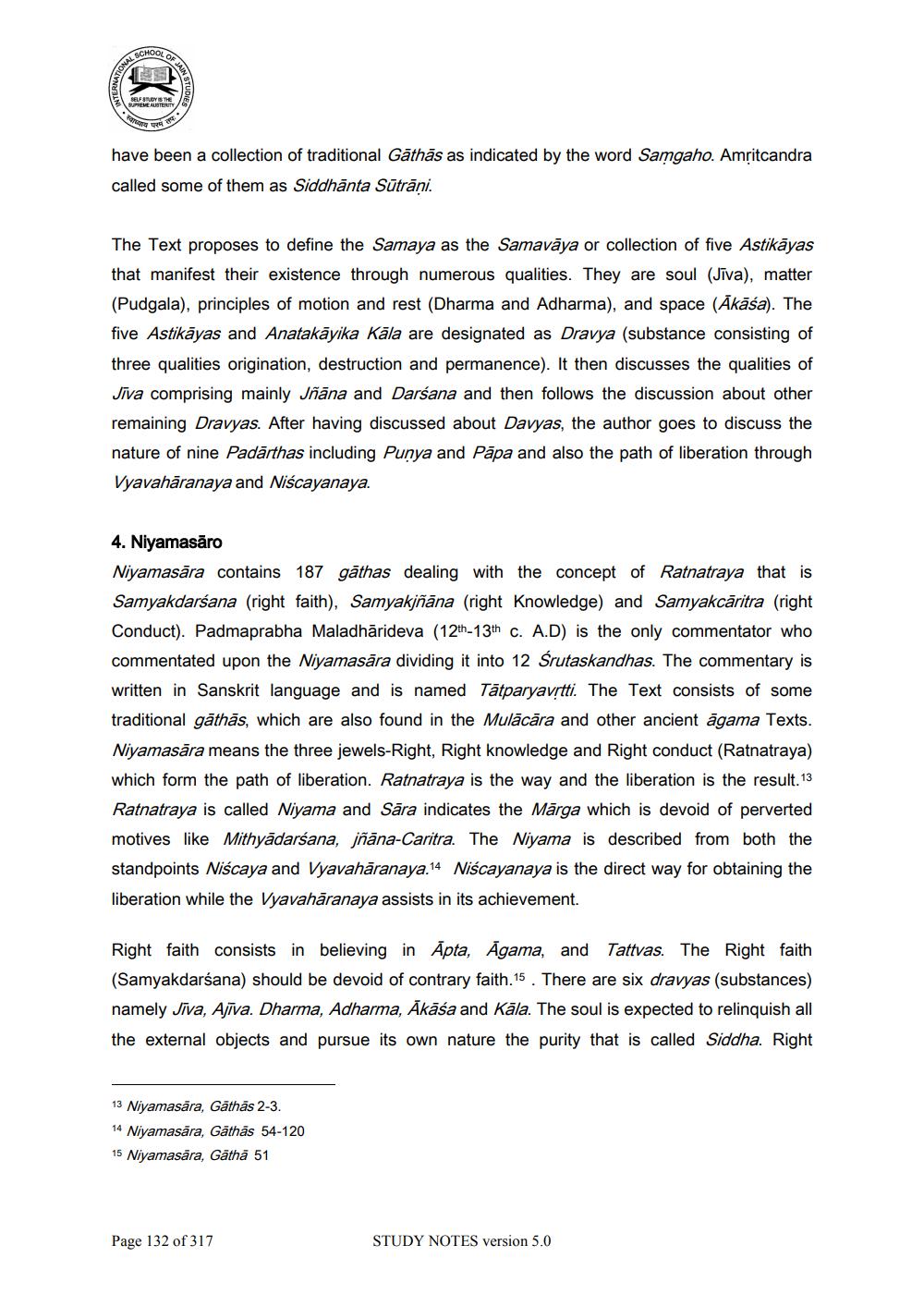________________
have been a collection of traditional Gathās as indicated by the word Samgaho. Amritcandra called some of them as Siddhānta Sūtrāņi.
The Text proposes to define the Samaya as the Samavāya or collection of five Astikāyas that manifest their existence through numerous qualities. They are soul (Jīva), matter (Pudgala), principles of motion and rest (Dharma and Adharma), and space (Ākāśa). The five Astikāyas and Anatakāyika Kāla are designated as Dravya (substance consisting of three qualities origination, destruction and permanence). It then discusses the qualities of Jiva comprising mainly uñāna and Darśana and then follows the discussion about other remaining Dravyas. After having discussed about Davyas, the author goes to discuss the nature of nine Padārthas including Punya and Pāpa and also the path of liberation through Vyavahāranaya and Niścayanaya.
4. Niyamasāro Niyamasāra contains 187 gāthas dealing with the concept of Ratnatraya that is Samyakdarśana (right faith), Samyakjñāna (right Knowledge) and Samyakcăritra (right Conduct). Padmaprabha Maladhārideva (12th-13th C. A.D) is the only commentator who commentated upon the Niyamasāra dividing it into 12 Śrutaskandhas. The commentary is written in Sanskrit language and is named Tātparyavrtti. The Text consists of some traditional gathās, which are also found in the Mulācāra and other ancient āgama Texts. Niyamasāra means the three jewels-Right, Right knowledge and Right conduct (Ratnatraya) which form the path of liberation. Ratnatraya is the way and the liberation is the result. 13 Ratnatraya is called Niyama and Sāra indicates the Mārga which is devoid of perverted motives like Mithyādarśana, jñāna-Caritra. The Niyama is described from both the standpoints Niścaya and Vyavahāranaya.14 Niscayanaya is the direct way for obtaining the liberation while the Vyavahāranaya assists in its achievement.
Right faith consists in believing in Āpta, Āgama, and Tattvas. The Right faith (Samyakdarśana) should be devoid of contrary faith.15. There are six dravyas (substances) namely Jiva, Ajīva. Dharma, Adharma, Akāśa and Kāla. The soul is expected to relinquish all the external objects and pursue its own nature the purity that is called Siddha. Right
13 Niyamasāra, Gathas 2-3. 14 Niyamasāra, Gāthas 54-120 15 Niyamasara, Gātha 51
Page 132 of 317
STUDY NOTES version 5.0




